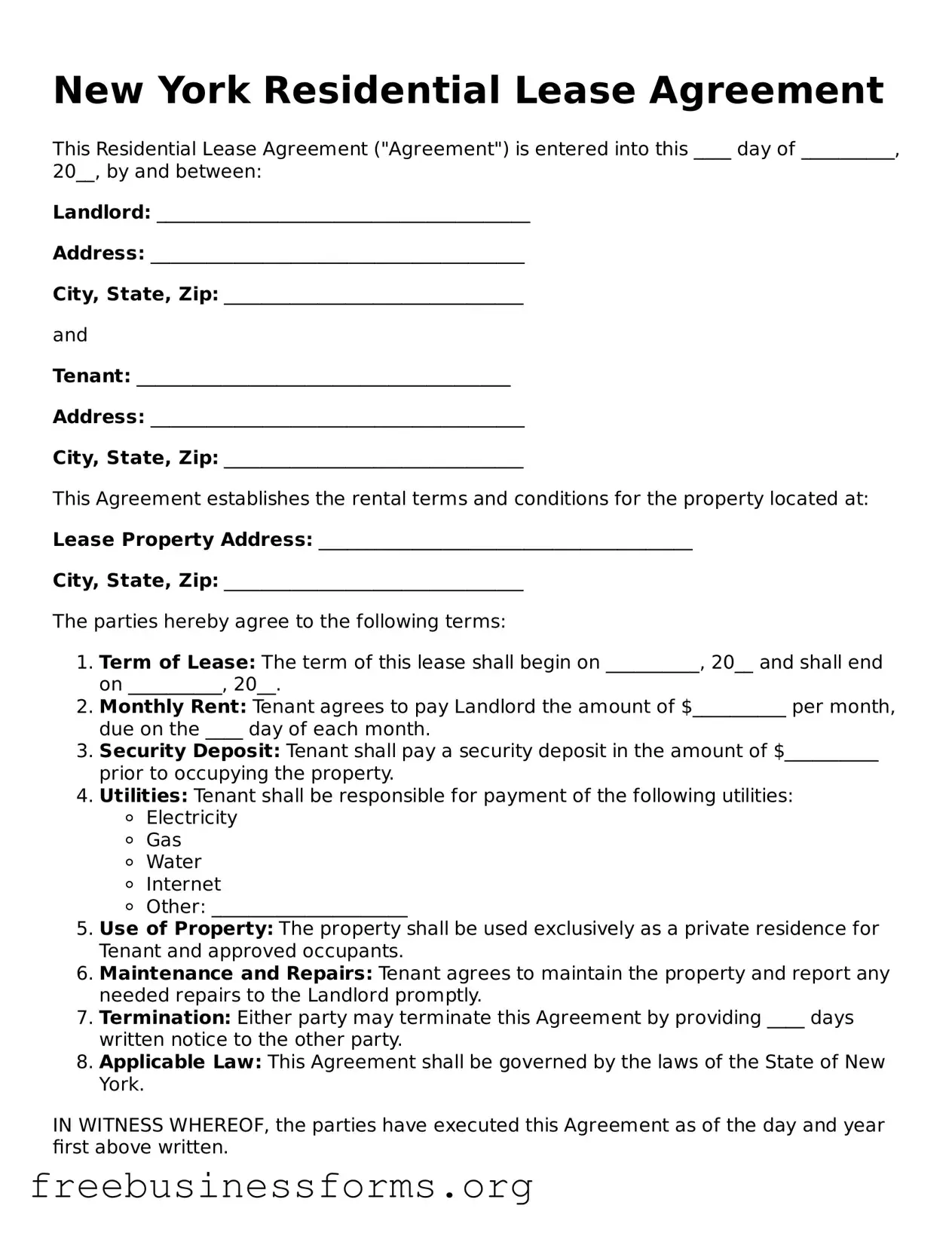New York Residential Lease Agreement
This Residential Lease Agreement ("Agreement") is entered into this ____ day of __________, 20__, by and between:
Landlord: ________________________________________
Address: ________________________________________
City, State, Zip: ________________________________
and
Tenant: ________________________________________
Address: ________________________________________
City, State, Zip: ________________________________
This Agreement establishes the rental terms and conditions for the property located at:
Lease Property Address: ________________________________________
City, State, Zip: ________________________________
The parties hereby agree to the following terms:
- Term of Lease: The term of this lease shall begin on __________, 20__ and shall end on __________, 20__.
- Monthly Rent: Tenant agrees to pay Landlord the amount of $__________ per month, due on the ____ day of each month.
- Security Deposit: Tenant shall pay a security deposit in the amount of $__________ prior to occupying the property.
- Utilities: Tenant shall be responsible for payment of the following utilities:
- Electricity
- Gas
- Water
- Internet
- Other: _____________________
- Use of Property: The property shall be used exclusively as a private residence for Tenant and approved occupants.
- Maintenance and Repairs: Tenant agrees to maintain the property and report any needed repairs to the Landlord promptly.
- Termination: Either party may terminate this Agreement by providing ____ days written notice to the other party.
- Applicable Law: This Agreement shall be governed by the laws of the State of New York.
IN WITNESS WHEREOF, the parties have executed this Agreement as of the day and year first above written.
Landlord Signature: _______________________________ Date: _______________
Tenant Signature: _______________________________ Date: _______________
